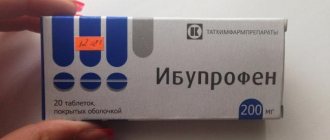Facial swelling is not only a cosmetic defect; if it appears frequently or is accompanied by redness and pain, it is a sign of quite serious health problems that need to be identified and treated.
ALENA PARETSKAYA
Pathophysiologist, immunologist, member of the St. Petersburg Society of Pathophysiologists ANDREY GRACHEV Leading cardiologist of the SM-Clinic holding, MD, academician of the Russian Academy of Medical Sciences
Facial edema is not a separate disease, but only a reflection of an imbalance between retention and excretion of fluid in the body. But what problems in the body can cause the face to swell and how serious is it?
Why does the face swell in adults?
Swelling on the face can occur at different times of the day - mainly in the morning or late afternoon, or they persist throughout the day, decreasing or increasing.
There are two types of reasons:
- physiological (or natural, not associated with diseases), they are usually not pronounced, not very strong, and disappear quickly;
- pathological, can be very strong, with changes in facial features, signs of inflammation, and are often quite persistent.
Each type of edema has the most typical causes; they occur mainly in the morning or evening hours, or do not depend in any way on the time of day. These characteristics are important for the doctor so that he can identify the leading causes and determine the tactics of examination and treatment.
Prevention methods
Timely prevention is the main condition for maintaining the health of the kidneys, heart and other organs at any age. Doctors have several recommendations on how to avoid swelling:
- choose foods with a minimum amount of salt, spices and sugar, avoid fatty and fried foods;
- give up bad habits - smoking and drinking alcoholic beverages;
- do not overeat before going to bed and do not drink a lot of liquid;
- undergo regular thyroid examinations and donate blood tests;
- choose orthopedic pillows and a sleeping mattress that will not impair cerebral circulation;
- prevent excess weight;
- Do simple physical exercises in the fresh air every day.
The Clinical Brain Institute offers individual programs for the diagnosis and treatment of various diseases that are accompanied by swelling in the face and headaches. Our center has precise, modern equipment that allows you to quickly assess the condition of internal organs and perform the necessary tests in the laboratory. Doctors are experienced specialists in a narrow and broad profile. They will prescribe a competent treatment regimen, but its effectiveness will depend, among other things, on following all recommendations at home.
Is there swelling on the face due to heart disease?
Yes, these questions usually worry women, says cardiologist Andrei Grachev.
They run to see a cardiologist when they can’t put a ring on their finger in the morning because it’s swollen or put on makeup because their face is swollen. The patient wants to look great, regardless of age and health status. And this is commendable. Men, as a rule, do not contact a cardiologist with such questions. The peculiarity of this issue is due to the fact that in patients with cardiovascular diseases, as a rule, swelling on the face appears at the final stage of a complication such as heart failure. First, they appear on the legs (the lowest point in relation to the heart), then fluid accumulates in the abdominal cavity, the liver and spleen enlarge (as a blood depot). And only after the fluid reaches the pleural cavities and the heart sac, swelling may occur on the face or hands.
Relieve swelling with exercise and massage
A good helper in eliminating swelling and removing excess fluid is massage:
- Lightly pinching and stroking the skin, move along the lines running from the nose to the outer parts of the face.
- Then from the middle of the neck to its sides.
- Along the forehead from the top to the bridge of the nose and eyebrows, down from the eyes, from the nose to the temples.
This massage will help increase blood supply to the skin, which will speed up the removal of fluid and reduce swelling.
A set of specially selected physical exercises, which are recommended to include:
- stretching exercises;
- exercises for extension and flexion of arms and legs;
- rotational movements of the body, arms, legs, head;
- extension;
- sudden movements of arms and legs;
- tilts and turns.
There is also a system of exercises aimed at eliminating bags under the eyes.
Facebuilding
is a fairly new, increasingly popular procedure that helps eliminate various cosmetic facial defects. By doing the exercises regularly, in a couple of months you will forget about droopy eyelids and bags under your eyes.
- Rotate your eyes alternately left and right, keeping your head straight.
- Squeeze your eyes shut, then open your eyes sharply. Repeat 10 times.
- Close and open your eyes.
Read material on the topic: Face building for the face
When do they occur most often?
Due to a number of circumstances, adds cardiologist Andrei Grachev, such as the flow of fluid to the upper half of the body in a lying position, changes in the biorhythms of hormone production (more often their active synthesis occurs at night or in the early morning hours), edema syndrome most often manifests itself in the early morning hours .
Morning
If we talk about physiological reasons, morning swelling is usually associated with constant lack of sleep, fasting or strict diets (limiting protein and fats). Sometimes swelling in the morning is caused by the wrong selection of skincare products (face cream, toner or cleanser). Also, morning swelling of the face can be caused by crying or stress in the evening or at night.
Possible swelling of the face in the morning due to an incorrectly selected pillow (it is too high, it provokes a narrowing of the blood vessels in the neck). Another physiological factor is an excess of fried, salty foods or liquids taken in the evening, before bed. In women, facial swelling in the morning can be caused by hormonal fluctuations, PMS or pregnancy. Some women report morning swelling during menopause.
Pathological causes of morning edema are mainly kidney damage. Such swelling is usually soft, mobile, appears on the face after sleep, and the skin acquires a waxy or yellowish tint. The most common causes of facial swelling are:
- glomerulonephritis - the acute form of the disease leads to edema, which lasts up to 2-3 weeks, if the process enters the chronic phase, edema is typical for periods of exacerbation of inflammation;
- Kidney amyloidosis - edema is typical of the second stage (proteinuria), when protein loss occurs and kidney function gradually deteriorates;
- membranous nephropathies - occur after taking certain medications, tumor therapy, acute infectious pathologies. Edema occurs in waves, with sharp or barely noticeable symptoms;
- chronic kidney disease (previously called renal failure) - swelling occurs gradually as renal damage progresses;
- kidney damage in severe systemic pathologies - edema is typical for nephropathy due to diabetes or systemic lupus erythematosus.
Evening
Sometimes facial swelling becomes noticeable in the evening, especially after an active day. Often this is one of the manifestations of pathologies of the cardiovascular system. Often, swelling of the face is accompanied by severe swelling in the area of the extremities - hands and feet, legs. These swellings are denser, the skin has a lower temperature than on other parts of the body, and such swelling goes away slowly. Often occur against the background of the following pathologies:
- amyloidosis of the heart and blood vessels;
- cardiomyopathy;
- sclerotic heart disease (cardiosclerosis);
- certain types of arrhythmia;
- constrictive pericarditis;
- some heart defects;
- arterial hypertension;
- cardiac lesions due to rheumatism.
Day
Sometimes facial swelling is most pronounced during the day or its appearance is not clearly related to the time of day. Among the main pathologies that lead to such edema are endocrine disorders - especially a lack of thyroid hormones (hypothyroidism). Facial swelling is especially pronounced with congenital hypothyroidism, in pregnant women or with autoimmune thyroiditis, cytokine-induced thyroiditis.
Rapidly increasing swelling of the face during the day can be a sign of allergies - to food, insect bites, cosmetics, medications and even cold. Sometimes facial swelling occurs during an attack of bronchial asthma due to difficulty breathing and fluid retention in the veins.
Facial swelling is possible in people who smoke and drink alcohol. This is due to the increased work of the lymphatic system to remove toxins from tissues.
Severe swelling of the face during the day is possible with respiratory infections and their complications - sinusitis, tonsillitis, frontal sinusitis. Swelling of the face is possible with a deficiency or excess of vitamins (especially fat-soluble ones).
Preventive measures to eliminate swelling
It is enough to follow the basic rules, and you will forget what swelling is:
- sleep and rest;
- eat right;
- drink enough liquid;
- Don’t drink too much before going to bed;
- do not smoke;
- Drink alcoholic beverages as rarely as possible and in minimal quantities;
- humidify the air in the room where you are often located.
By adhering to these recommendations, as well as promptly diagnosing and treating diseases of the cardiovascular and urinary systems, you will not have to think about what measures to take to eliminate swelling.
The importance of understanding the causes and treatment of this phenomenon should not be ignored. After all, swelling can be not just a cosmetic defect, but a signal of serious disturbances in the functioning of the body. Only a one-time occurrence should not cause concern, the cause of which is obvious to you and its elimination is not associated with any problems.
Read material on the topic: How to increase skin elasticity
How to quickly relieve facial swelling in adults
If this is physiological swelling of the face, not associated with serious pathologies that require medical supervision and the use of selected medications, excess fluid can be eliminated through certain simple measures and actions.
Taking a contrast shower or washing with cold/hot water. This method refreshes, increases tissue tone, enhances the outflow of fluid from the skin and reduces swelling.
Using ice – a couple of pieces of ice will help deal with swelling on the face quickly and effectively. In addition, you can prepare herbal decoctions with a tonic effect in advance and freeze them, using them for washing.
Facial massage is an effective remedy that helps improve microcirculation and swelling. Manual massage, the use of rollers, ice cubes, and cold spoons help. Sometimes you can first wipe your face with green tea and apply compresses with it to your face and eye area.
Eliminating swelling with medications
Drug elimination of swelling can only be carried out after consulting a specialist, and it will only be justified if you have problems with internal organs. If this phenomenon is caused by an incorrect lifestyle (diet, bad habits, non-compliance with sleep and rest schedules), then you can do without the use of medications by simply changing your daily routine.
Diuretics will help eliminate swelling, but not its cause.
One of the commonly used medications to combat edema is Furasemide. It helps eliminate even their strongest manifestations and promotes the removal of fluid from the body. Like any medicine, it should be used with caution, since Furasemide is a fairly powerful drug, the side effects of which can lead to dehydration and leaching of important trace elements.
For minor swelling of the eyes, it will be enough to take potassium-sparing diuretics. "Veroshpiron" will do. True, its effect appears only on the fifth day.
Upon completion of the course of medication, swelling will reappear. Only after undergoing a full examination can the cause be found.
In some cases, it is possible to take synthetic drugs to eliminate edema, but it is important to remember that they have a complete effect on the entire body and lead to dehydration and even loss of substances necessary for normal functioning.
To eliminate swelling caused by allergies, antihistamines such as Suprastin, Tavegil, etc. are used.
Read material on the topic: Facial mesotherapy procedure: pros and cons
Recommendations
To achieve and maintain the effect, the action plan, in addition to the main therapy, may include compliance with certain lifestyle recommendations. These include: • Do not sit for a long time in one position with your legs tucked. • Change shoes frequently (at least 1-2 times throughout the day). • Periodically massage your feet using rubbing or pinching movements. • Balance your diet by adding foods with potassium and reducing your intake of sodium-rich foods. • When sleeping, place a special cushion or a regular pillow under your shins so that your lower extremities are above the level of your heart. Before going to bed, you need to raise them and keep them in this position for 5-10 minutes to relieve accumulated fatigue and tension. • In the early stages of varicose veins, physiotherapy, diet therapy and physical therapy are very useful, which can only be done under strict medical supervision.
Unfortunately, with an advanced disease, it is not possible to limit yourself to just lifestyle changes or physical activity - edema requires therapy. Therefore, you need to consult a doctor in a timely manner, preferably at the earliest stages of the development of the pathology, so that all the unpleasant sensations in the legs go away and your gait becomes light and relaxed again. Then the treatment will be effective, and the chances of a full recovery will be as high as possible.
Similar articles:
- Directions
- Specialists
- For visitors
- Articles and videos
ONLY UNTIL January 31st!
20% DISCOUNT ON CLASSES ON THE REDCORD SUSPENSION SYSTEM
Classes are conducted by instructor-methodologist Osipova Maria.
REDCORD allows you to eliminate muscle imbalance by relaxing some muscles and stimulating others. This allows you to resume the motor pattern and return the patient to normal functioning!








